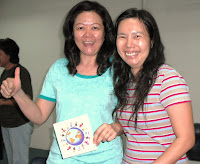a revision on course content...
Therapeutic Use of Small World Play
Summary
This module introduces the participants to the use of dramatic representation using small play objects. Small world play is imaginative play where individuals are provided with small objects with which to play creating the small world. The individual is provided with a clearly defined private and delineated space such as at or under a small table, sand tray, play mat or in a small secluded corner.
In the process, current preoccupations, inner subconscious and unconscious thoughts and feelings are projected and transferred onto the objects in the ‘small world’. This provides the opportunity for therapeutic aims to be realized.

This is a six weeks learning cycle module and commences with a day workshop in week one. The workshop provides participants with an overview of the area of study as well as outlining the associated basic skills.
Participants will be invited to formulate their questions relevant to their clinical context. This provides the focus for their own individual action learning. The individual will be allocated to an action learning set (ALS).
A problem scenario pertinent to achieving the module outcomes is presented to the ALS. The ALS engages as a learning team in organising themselves to enquire, research, discuss and formulate their solutions to the presenting problem scenario.
The ALS present and publish their group findings and receive feedback from the facilitator and from the other ALS by week six. The learning activities are supported by two 2-hourly online group tutorial session for each set during week two and week five.
An online group supervision is provided to each ASL in week four/five to facilitate skills implementation and evaluation. The individual participant is expected to keep a personal learning journal of their learning experiences throughout the six week cycle. This is to include an evaluation and the learning acquired from their efforts in implementing the skills relevant to the module in their own respective work environment.
Aims
This module is intended to provide participants with the opportunity to develop the basic foundation skills of therapeutic play through the use of small world objects. This module is one of the many interrelated areas of therapeutic play which participants can decide to subscribe to in their CPPD.
Other related areas of therapeutic play module are the use of stories, role playing, puppets and masks etc. etc.
Intended Outcomes
At the end of the this module, the participant will be able to:
· Consider the positive relationship between play and psychological, emotional, cognitive and social development
· Consider how small world play could help in the assessment and identification of actual and potential issues, problems and needs of client(s)
· Utilise their facilitative skills to effectively engage clients in small world play towards their therapeutic intentions
· Evaluate their role and some the therapeutic outcomes of their client(s)

Indicative Contents
*The specific contents of each respective module in the CPPD programme is dependent on the baseline knowledge and skills of the participants of the cohort.
As the programme adopts an action learning approach to learning, the problems and challenges of practice that participants bring to the module will to a large extent determine the contents of the module.
The content will be pertinent to the necessary relevant skills and knowledge required to address the issues brought forth. The indicative contents listed below provide a suggestive area of focus and is negotiable with each cohort.
· The different elements of play and the psychology of play
· Developing, amplifying and extending small world play into story creation, role playing, improvisation and movement, etc.
· Observation and assessment of emotional and psychological issues through small world play
· Sourcing cultural and developmental relevant small world play objects for therapeutic intentions
· Skills of therapeutic play facilitation
· Using small world play throughout the developmental lifespan for various age related groups
· Therapeutic use of sand and water in small world play
· The unconscious and the collective conscious at play
· Setting up the therapeutic space for small world play
· The use of small world play in groups
Assessment
· Attendance of the module workshop
· Satisfactory participation and contribution to the action learning set which is peer evaluated and assessed.
· Provide satisfactory evidence of critical self-reflection, analysis, evaluation and synthesis in their personal learning journal
Reference
Specific references, reading lists or bibliography will be provided as the group progresses in their engagement with their action learning sets and determine by direction and area of their learning interest and research. The reference below is intended to provide a brief introduction to area of study.
- Stagnitti,K & Cooper, R (Editors) (2009) Play As Therapy: Assessment and Therapeutic Interventions Jessica Kingsley
- Kalff, D. (2003) Sandplay: A Psychotherapeutic Approach to the Psyche Temenos Press












